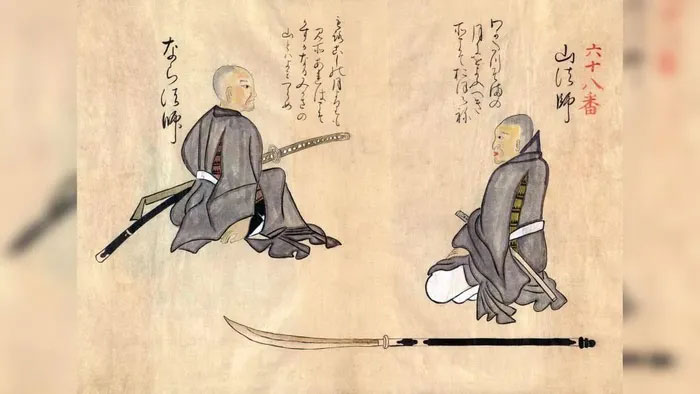Artifacts found in Japan may be weapons of ninjas, including several objects resembling the precursor to the famous throwing star, discovered at various sites, including two castles in Japan, scientists reported.

A hand-painted illustration of Japan in the mid-18th century alongside two ninjas and 430-year-old artifacts that may be primitive weapons associated with ninjas.
Archaeologists excavated artifacts from 1960 to 2010 at several locations in Japan, including two castles – Iwatsuki Castle and Hachioji Castle. The ninja objects may date back to the Siege of Odawara in 1590. During this siege, the Toyotomi and Tokugawa clans defeated the Hojo clan, which controlled a large part of Japan, and captured both castles.
The siege occurred during the Sengoku period (1467-1615), a time when Japan was divided among many warlords vying for power. Historical texts mention ninjas as spies and saboteurs during this period, and they may have participated in the siege.
The artifacts include clay pellets that could be the original form of makibishi caltrops, a type of weapon with sharp spikes that can injure the feet of soldiers and horses. These artifacts may have belonged to a “fighting group that could operate like ninjas,” said Iwata Akihiro, an archaeologist and manager at the Saitama Prefectural Museum of History and Folklore.
Akihiro noted that these weapons may have been hastily manufactured before the siege. However, despite being made quickly, they could have been effective. The flat stones were “used to hinder the movement of enemies who would attack at any moment, and while the enemy was obstructed, the soldier could escape.” Meanwhile, the clay pellets could have stopped the movement of the invading enemies at the castle.
Despite being armed, the ninjas of the Hojo clan were unable to save the castles, as both fell to the much larger forces of the Toyotomi and Tokugawa clans.
In 1615, the Tokugawa clan succeeded in unifying all of Japan under their rule, establishing a shogunate that would hold power for centuries.


















































